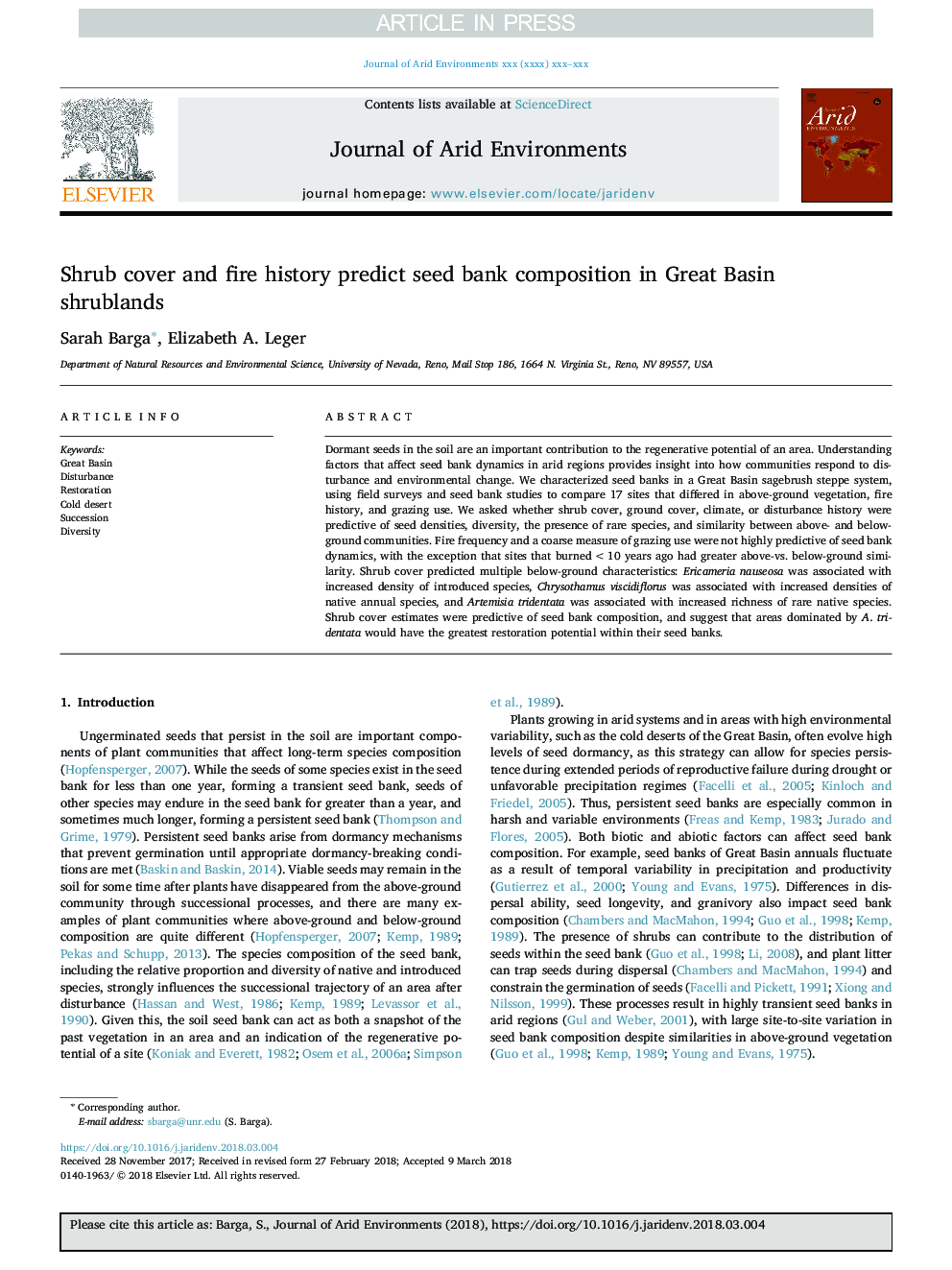| Article ID | Journal | Published Year | Pages | File Type |
|---|---|---|---|---|
| 8848486 | Journal of Arid Environments | 2018 | 11 Pages |
Abstract
Dormant seeds in the soil are an important contribution to the regenerative potential of an area. Understanding factors that affect seed bank dynamics in arid regions provides insight into how communities respond to disturbance and environmental change. We characterized seed banks in a Great Basin sagebrush steppe system, using field surveys and seed bank studies to compare 17 sites that differed in above-ground vegetation, fire history, and grazing use. We asked whether shrub cover, ground cover, climate, or disturbance history were predictive of seed densities, diversity, the presence of rare species, and similarity between above- and below-ground communities. Fire frequency and a coarse measure of grazing use were not highly predictive of seed bank dynamics, with the exception that sites that burned <10 years ago had greater above-vs. below-ground similarity. Shrub cover predicted multiple below-ground characteristics: Ericameria nauseosa was associated with increased density of introduced species, Chrysothamus viscidiflorus was associated with increased densities of native annual species, and Artemisia tridentata was associated with increased richness of rare native species. Shrub cover estimates were predictive of seed bank composition, and suggest that areas dominated by A. tridentata would have the greatest restoration potential within their seed banks.
Related Topics
Physical Sciences and Engineering
Earth and Planetary Sciences
Earth-Surface Processes
Authors
Sarah Barga, Elizabeth A. Leger,
